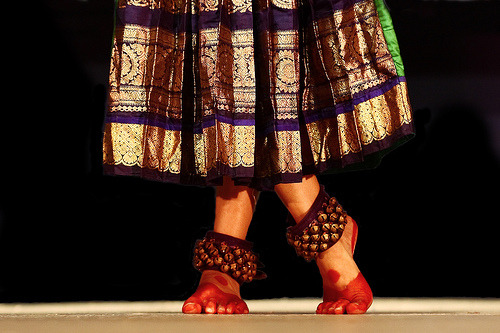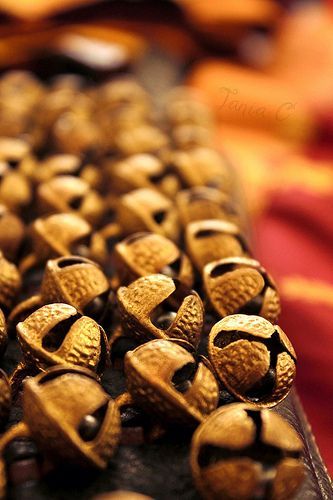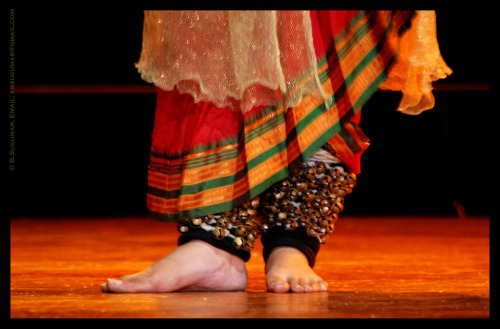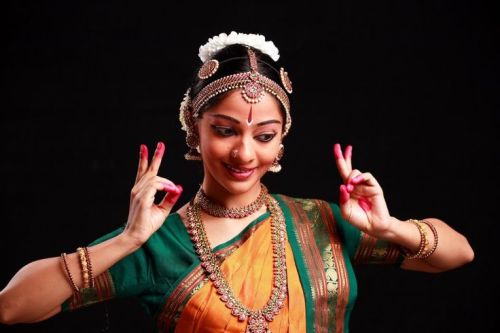#indiandance
Theankle bells worn by Indian classical dancers are an essential element of the dance. The sound of the bells highlights the musical accompaniment to the dance, and make very obvious the dancer’s skill and precision. In many classical Indian dance forms, the number of rows increases as the dancer becomes more accomplished (for example, a student may begin with Ghungroo featuring two rows, and a masterful dancer might have four rows, or more). The name for the bells is Ghungroo (Hindi: घुँघरू ), and salangai in Tamil.
Pictured: A kuchipudi dancer (top), details (center), and a kathak dancer (bottom).
Further reading:
Kathak
Bharatanatyam
Odissi
Kuchipudi
Post link
A dancer (Bharatanatyam, I believe) preparing for a performance. She is applying alta to her feet. You can also see the surya and chandra (sun and moon) ornaments in her hair (surya always is worn on the right).
Post link

![(5/6) Bollywood’s original item girl, Helen [circa Jewel Thief, 1967] (5/6) Bollywood’s original item girl, Helen [circa Jewel Thief, 1967]](https://64.media.tumblr.com/60f0445736532c7ec18f8f49b67741d8/tumblr_nko1eb2AE91s2xw6vo1_500.jpg)





